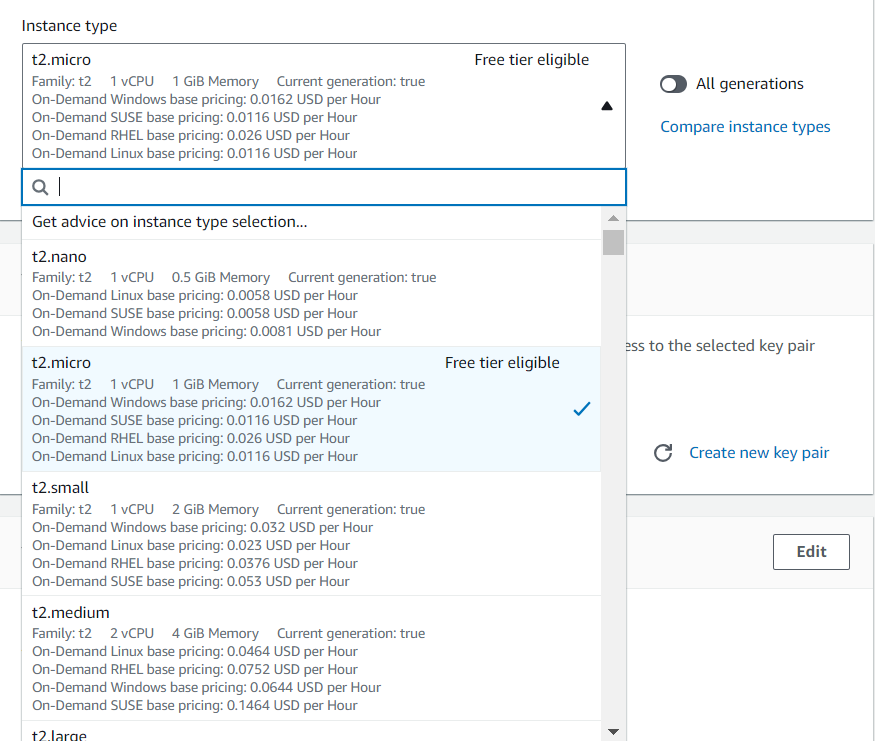How to create an EC2 instance on AWS
 Harshit Paneri
Harshit Paneri
Step 1: Log in to the AWS Management Console
Log in using your AWS account credentials.
Step 2: Navigate to EC2 Dashboard
Search for EC2 service on the search bar and Click on EC2

Step 3: Launch an Instance
Click on Launch Instances. 🗃
Fill in all details
Instance Name: ec2-test
Select Amazon Machine Image (AMI): Ubuntu
Select Architecture: 64-bit(x86)

Choose an Instance Type: t2-micro (free tier)

Key pair (login)
Create a new key pair and download the .pem file, it will help you to connect with the instance in the next step.🔐
Key pair name: ec2-test-key.
Choose a key format according to your requirement

Please select the newly created key from the drop-down options.
Network Setting and Configure Storage are set by default for now we can change as per our requirement.
Note: You can check HTTPS (port 443) and HTTP (port 80)
It enables ports. 🥅

Now Click on Launch Instance

It will take a few seconds to launch the instance ☕
How to connect with Instance 🤝🏻

Remember to click on the Connect button.
You will discover four different ways to connect in this section.
EC2 Instance Connect
Session Manager
SSH client
EC2 serial console

Now you are connected to your server
Resources:
AWS Doc
What is EC2 Instance Type
What is AMI
Subscribe to my newsletter
Read articles from Harshit Paneri directly inside your inbox. Subscribe to the newsletter, and don't miss out.
Written by

Harshit Paneri
Harshit Paneri
👋 Hey, I’m Harshit — a systems-focused engineer who enjoys building the kind of tech that just works. Whether it's crafting resilient backend services or designing fault-tolerant infrastructure, I focus on the parts of the system that keep everything up and running — reliably, at scale, and under real-world pressure. At Jumbotail, I work across the boundary of platform and backend engineering — setting up robust CI/CD pipelines, optimizing system performance, and building internal tools and APIs that developers rely on daily. My goal is simple: keep things fast, reliable, and easy to operate. 🧠 I care deeply about: High availability and system reliability Scalable service and infrastructure design Developer experience and automation Observability and proactive incident response 🛠️ Tools I work with regularly: Infra & Platforms: AWS, Kubernetes, Terraform, GitHub Actions Backend & APIs: Node.js, Java, Python, Go Monitoring & Ops: DataDog, Grafana, CloudWatch, Zenduty I enjoy working at the intersection of infrastructure and software — the kind of engineering that isn’t always visible to users, but makes all the difference when things go live at scale. 🔗 GitHub: https://github.com/harshit-paneri 📝 Blog: https://hashnode.com/@harshitpaneri